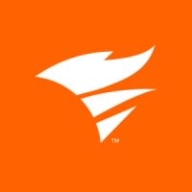

Find out in this report how the two Cloud Monitoring Software solutions compare in terms of features, pricing, service and support, easy of deployment, and ROI.
| Product | Market Share (%) |
|---|---|
| Elastic Observability | 4.3% |
| SolarWinds Hybrid Cloud Observability | 0.4% |
| Other | 95.3% |


| Company Size | Count |
|---|---|
| Small Business | 8 |
| Midsize Enterprise | 4 |
| Large Enterprise | 16 |
Elastic Observability offers a comprehensive suite for log analytics, application performance monitoring, and machine learning. It integrates seamlessly with platforms like Teams and Slack, enhancing data visualization and scalability for real-time insights.
Elastic Observability is designed to support production environments with features like logging, data collection, and infrastructure tracking. Centralized logging and powerful search functionalities make incident response and performance tracking efficient. Elastic APM and Kibana facilitate detailed data visualization, promoting rapid troubleshooting and effective system performance analysis. Integrated services and extensive connectivity options enhance its role in business and technical decision-making by providing actionable data insights.
What are the most important features of Elastic Observability?Elastic Observability is employed across industries for critical operations, such as in finance for transaction monitoring, in healthcare for secure data management, and in technology for optimizing application performance. Its data-driven approach aids efficient event tracing, supporting diverse industry requirements.
SolarWinds Hybrid Cloud Observability enhances IT operations with comprehensive visibility across hybrid environments for improved performance and uptime.
Providing a unified platform, SolarWinds Hybrid Cloud Observability allows IT teams to manage, monitor, and optimize both on-premises and cloud resources. It integrates seamlessly with existing tools, improving efficiency with robust data analytics and visualization. Its advanced features decrease time-to-resolution for system issues and help maintain system health.
What are the most important features of SolarWinds Hybrid Cloud Observability?SolarWinds Hybrid Cloud Observability is implemented across multiple industries like healthcare, finance, and manufacturing to ensure reliable performance and security of IT ecosystems. Its adaptability and comprehensive coverage make it a favored choice for enterprises managing both legacy and cloud-based infrastructures.
We monitor all Cloud Monitoring Software reviews to prevent fraudulent reviews and keep review quality high. We do not post reviews by company employees or direct competitors. We validate each review for authenticity via cross-reference with LinkedIn, and personal follow-up with the reviewer when necessary.